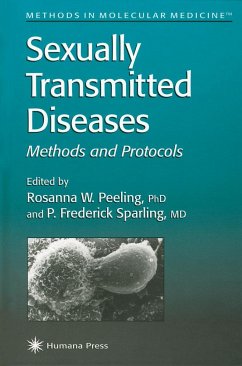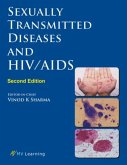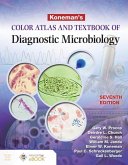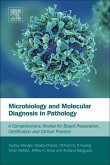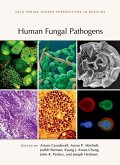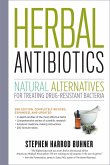In Sexually Transmitted Diseases: Methods and Protocols, Rosanna Peeling and P. Frederick Sparling have created a comprehensive collection of cutting-edge molecular protocols for the laboratory diagnosis and study of sexually transmitted diseases, including HIV. The methods-each crafted by a leading expert for comprehensiveness and genuine laboratory utility-cover the major sexually transmitted pathogens, including Neisseria gonorrhoeae, Chlamydia trachomatis, Haemophilius ducreyl, Treponema pallidum, and herpes simplex. Additional molecular techniques are included for detecting the genital mycoplasmas, hepatitis B virus, HIV-1, human papillomavirus. This book will significantly enhance our ability to detect sexually transmitted infections and to conduct research to further our understanding of sexually transmitted diseases. Eminently practical and up-to-date, Sexually Transmitted Disease Protocols provides a comprehensive collection of reliable molecular methods for STD diagnosis, research, and patient management.
Hinweis: Dieser Artikel kann nur an eine deutsche Lieferadresse ausgeliefert werden.
Hinweis: Dieser Artikel kann nur an eine deutsche Lieferadresse ausgeliefert werden.
"This is an excellent addition to the Humana Press series, 'Methods in Molecular Medicine.' This is a highly valuable and unique text since it describes molecular techniques for a wide range of STD pathogens. . . Fifty percent of the text is dedicated to describing diagnostic techniques currently used in the clinical or research laboratory. . . The credibility of the text is greatly enhanced by the outstanding group of international STD investigators, which the authors have assembled for the purpose of developing a concise yet authoritative laboratory resource. This text would be a valuable acquisition for both STD investigators and students contemplating laboratory or clinical studies in this area of medicine. "-4 Stars, Doody's Health Sciences Book Review Journal
"The methods described are clearly written in a 'recipe' format . . .easy to follow and annotated with detailed notes. The amount of detail provided will enable investigators to get the methods working using this book alone."-Journal of Medical Microbiology
"This is an excellent, concise, and comprehensive manual. . .a very useful addition to the library of any laboratory wanting to take advantage of the exciting developments this new technology provides."-Molecular Biotechnology
"Drs. Peeling and Sparling have assembled a team of 24 international experts to prepare this volume, which is the first publication devoted solely to the molecular diagnosis of sexually transmitted diseases. This book is particularly timely in that describes state-of-the-art methods for detecting sexually transmitted infections using molecular biology techniques, provides insights about the relative strengths and weaknesses of a number of different commercial and nonproprietary assays, and includes commentary on the traditional culture or serology procedures for detecting and characterizing bacterial and viral infections....this is a very useful volume that provides both reference information as well as step-by-step protocols for performance of various molecular-based assays for detection of sexually transmitted pathogens. Any clinical laboratory that uses such technology for diagnostic testing, screening, or through a reference laboratory will find this textbook useful."-American Journal of Clinical Pathology
"This volume will help to achieve a rapid detection of the causative agents, which is a prerequisite for appropriate measures....It is concisely written, and should be used in the respective laboratories for either implementation of the procedures described or for critical review of own inhouse methods."-International Journal of Medical Microbiology
"The methods described are clearly written in a 'recipe' format . . .easy to follow and annotated with detailed notes. The amount of detail provided will enable investigators to get the methods working using this book alone."-Journal of Medical Microbiology
"This is an excellent, concise, and comprehensive manual. . .a very useful addition to the library of any laboratory wanting to take advantage of the exciting developments this new technology provides."-Molecular Biotechnology
"Drs. Peeling and Sparling have assembled a team of 24 international experts to prepare this volume, which is the first publication devoted solely to the molecular diagnosis of sexually transmitted diseases. This book is particularly timely in that describes state-of-the-art methods for detecting sexually transmitted infections using molecular biology techniques, provides insights about the relative strengths and weaknesses of a number of different commercial and nonproprietary assays, and includes commentary on the traditional culture or serology procedures for detecting and characterizing bacterial and viral infections....this is a very useful volume that provides both reference information as well as step-by-step protocols for performance of various molecular-based assays for detection of sexually transmitted pathogens. Any clinical laboratory that uses such technology for diagnostic testing, screening, or through a reference laboratory will find this textbook useful."-American Journal of Clinical Pathology
"This volume will help to achieve a rapid detection of the causative agents, which is a prerequisite for appropriate measures....It is concisely written, and should be used in the respective laboratories for either implementation of the procedures described or for critical review of own inhouse methods."-International Journal of Medical Microbiology

